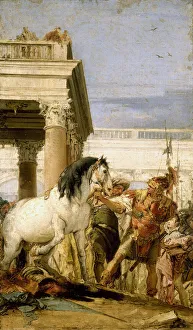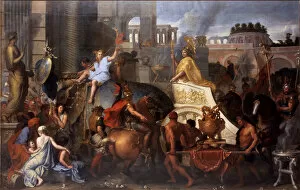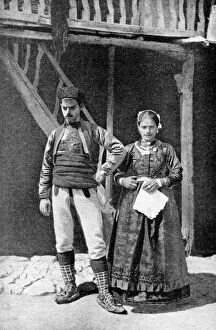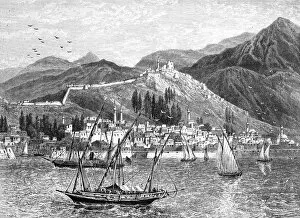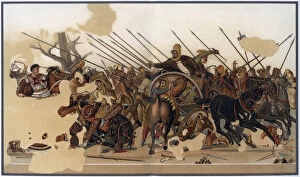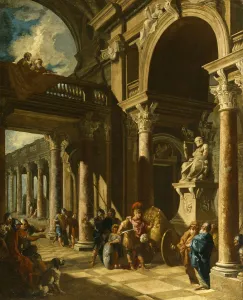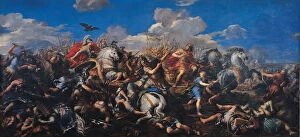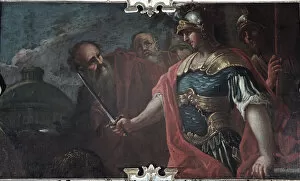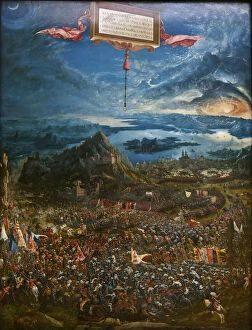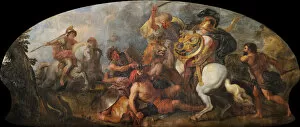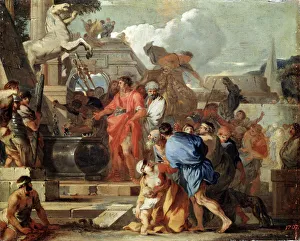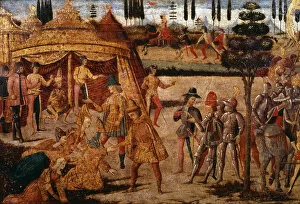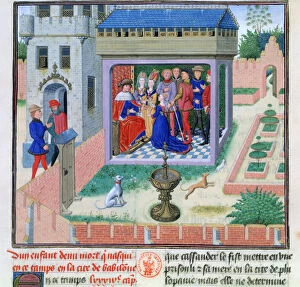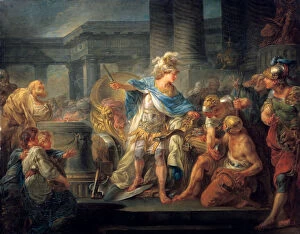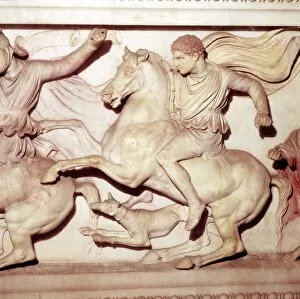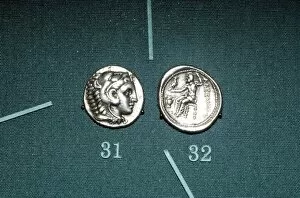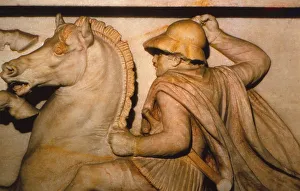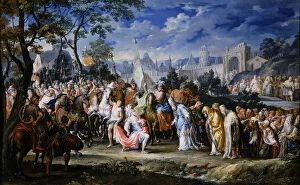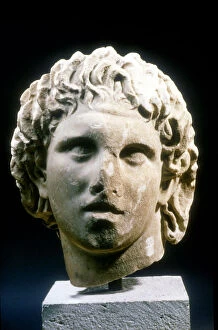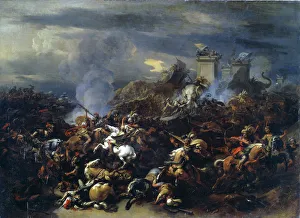Macedonia Collection (page 13)
Macedonia, a land steeped in rich history and cultural heritage, holds within its borders countless treasures that tell the tales of ancient civilizations
All Professionally Made to Order for Quick Shipping
Macedonia, a land steeped in rich history and cultural heritage, holds within its borders countless treasures that tell the tales of ancient civilizations. Nestled in Thessalonica, Macedonia, Greece, Europe, this enchanting region is home to numerous Greek Orthodox icons that depict pivotal moments in religious history. One such icon portrays Christ's resurrection, symbolizing hope and triumph over death. It serves as a testament to the unwavering faith of the Greek Orthodox community residing in Macedonia. Another icon showcases Jesus' crucifixion, evoking deep emotions and reminding believers of his sacrifice for humanity. The visitation of the Virgin Mary to her cousin Saint Elizabeth is beautifully depicted in an iconic masterpiece by Godong. This sacred event signifies divine blessings and intergenerational connections within Christianity. As we explore further into Macedonia's historical tapestry, we encounter a map illustrating the vast empire conquered by King Alexander the Great. The Battle of Issus stands out as one of his most significant victories - a turning point that shaped not only Macedonian history but also influenced neighboring regions. Moving forward through time, another captivating icon reveals Christ's birth in Thessaloniki. This depiction encapsulates the joyous celebration surrounding Christmas and highlights Macedonia's role as a cradle of Christian traditions. Intriguingly intertwined with its past glories are maps showcasing both the Macedonian Empire following Alexander's conquests and its connection with neighboring empires like Thracian and Dacian under Roman rule. These maps offer glimpses into geopolitical shifts throughout centuries while underscoring Macedonia's strategic importance on ancient trade routes. Lastly, an exquisite Greek Orthodox icon featuring Virgin Mary holding Baby Jesus represents love and devotion transcending borders across Thessalonica, Macedonia, Greece, Europe – uniting believers under their shared faith. Macedonia remains an extraordinary destination where artistry meets spirituality; it invites visitors to immerse themselves in its vibrant history and embrace the profound cultural legacy it proudly preserves.










